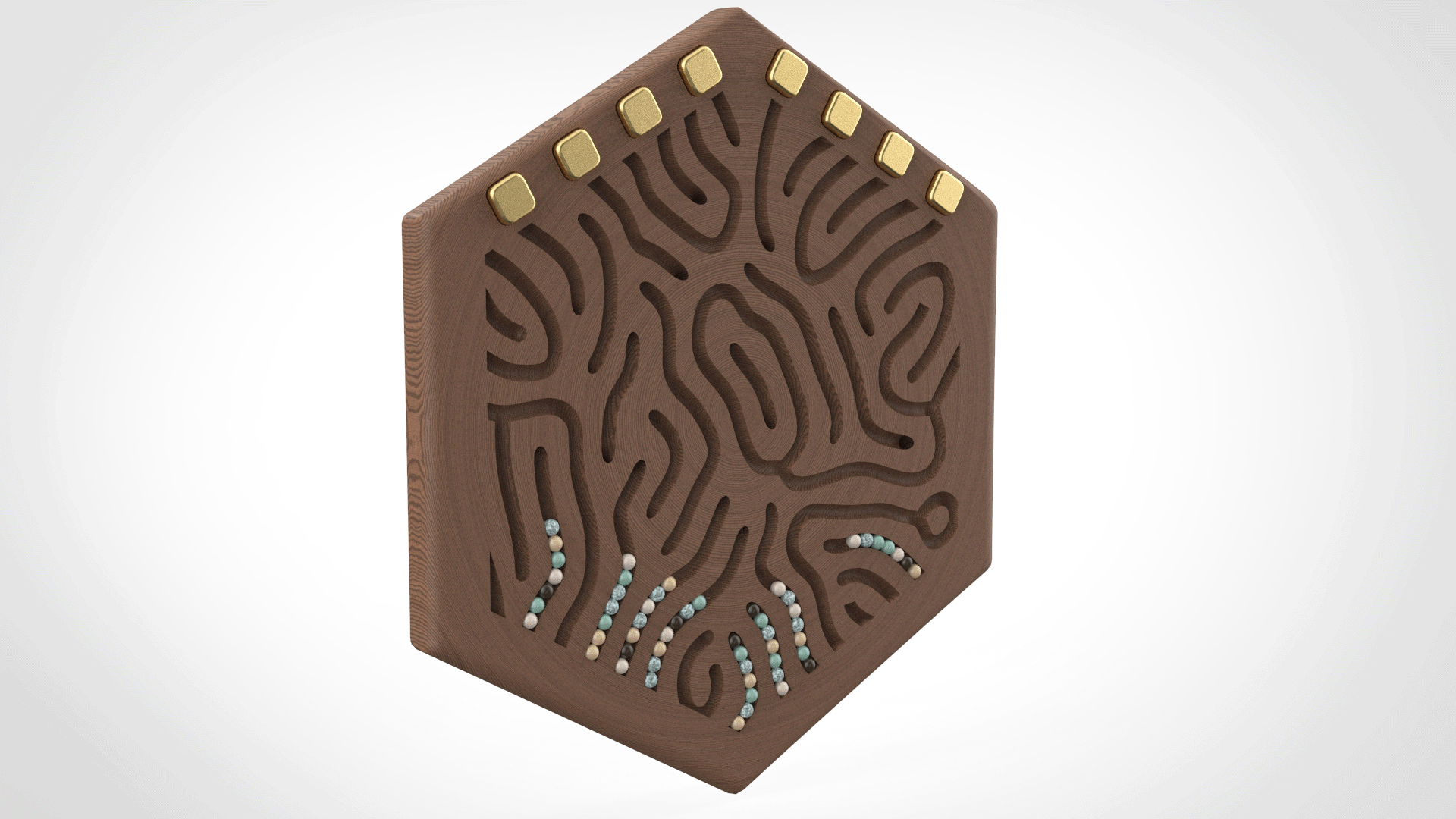Labyrinth
2020
18" x 1.5" x 20"
457mm x 38mm x 508mm
Master Thesis
Walnut, Brass & Mazonite Stones

I strive to understand how the environment around us affects our emotional state, our behaviour, and our mental health. I seek a destigmatized idea of mental health, a way to show that it is a factor of everybody’s health meant to be prioritized as much as physical health and to expose the burden of frivolousness that it carries. I seek ways to burst the bubble that mental health lives in the world of design, to show that mental health should be as integrated in all designs as much as ergonomics and sustainability.
Based on my research I’ve concluded that structure, joy, and motivation are powerful and sustainable tools against everyday Overwhelm and therefore improve our wellbeing and quality of life. Though there can be multiple manifestations of these elements, my approach for them is based on microtasking, play and rewards; all of which are present in the Labyrinth.
The Labyrinth proposes to be a new typology of everyday products meant to fit our everyday activities and emotional states. As every object, it serves multiple functions, some obvious and some not.
It serves as a way to externalize and objectify our personal Overwhelms. It becomes our companion and a helping hand as we try to balance our time. It concretizes our everyday accomplishments. It shows us we are not alone and we are all just trying to make our way through the labyrinth.
There are eight paths on the Labyrinth. Each one represents a microtask (identified by its brass tile) and every stone represents the number of times the task has been accomplished. Every time a stone reaches the end of its path, it stacks up at the bottom serving as a visual reminder of the accomplishments one has done working up to the final reward obtained once the board is completed. The Labyrinth can then be reset by rotating it around and returning the stones to their original place.
The importance of tactility is the reason why I decided to make the Labyrinth an analog object. The tactile experience is another factor that connects us to objects. A satisfying sensorial experience invites us to repeat it. This is precisely the relationship I want the user to have with the Labyrinth.










